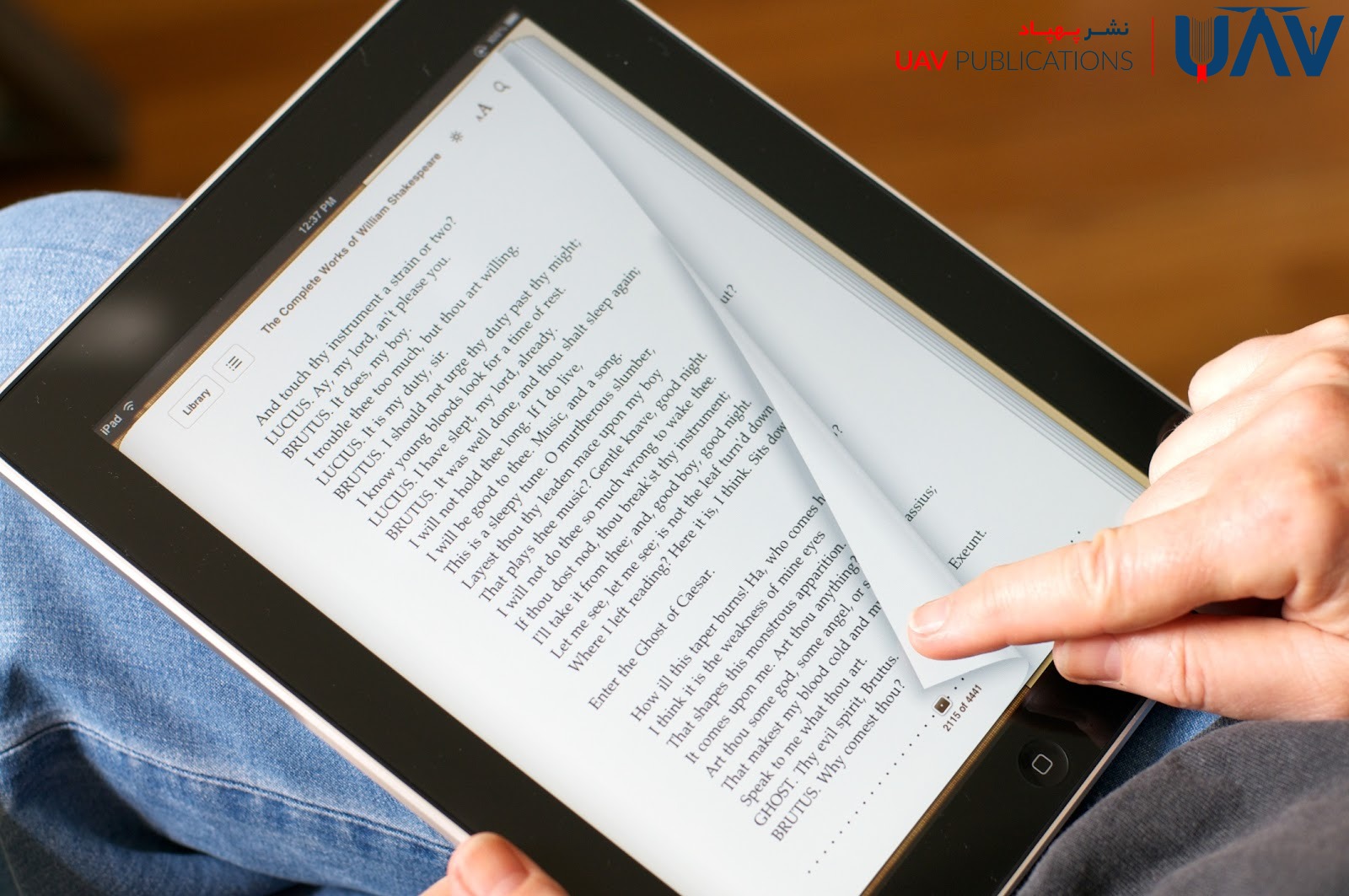Digital e-readers are electronic devices that provide access to electronic books (e-books). These tools have ushered in a significant shift in reading habits, encouraging many individuals to transition from traditional print to digital reading. One of the most notable advantages of e-readers is their ability to store and transport hundreds or even thousands of books within a single, lightweight, and portable device. This convenience has reshaped the logistics of carrying physical books. Furthermore, features such as quick text search, note-taking, customizable font size, and adjustable screen brightness have collectively enhanced the overall reading experience.
However, digital e-readers are not without drawbacks. Chief among them is their dependence on battery power and electricity. Additionally, the lack of a tangible sensory experience—such as the feel of turning paper pages or the scent of a freshly printed book—represents a shortcoming for many traditional readers. Some users also report eye strain after extended screen use, though advancements like E-ink display technology have significantly mitigated this issue. Ultimately, the choice between a digital reader and a physical book depends on individual needs, lifestyle, and personal preferences, as each format offers its distinct advantages and limitations.
What Is a Digital E-Reader?
A digital e-reader, commonly referred to as an e-reader, is a device specifically designed for reading electronic books. These devices typically utilize E-ink screen technology, which closely resembles actual paper and is less fatiguing on the eyes compared to backlit screens on tablets and smartphones. Unlike general-purpose electronic devices, e-readers are specifically designed to facilitate extended reading sessions with minimal discomfort. Users can store thousands of titles digitally and access them effortlessly anytime, anywhere.

The ability to adjust font type, size, and screen lighting also makes these devices particularly accessible for individuals with visual impairments. Additional features, such as search functions, highlighting, and note-taking, have made digital e-readers invaluable tools for students and researchers. Their lightweight build, portability, and long battery life make them an ideal companion for avid readers and frequent travelers alike.
Comparing Digital E-Readers and Print Books
While both digital e-readers and print books remain popular mediums for reading, they offer fundamentally different experiences. Physical books are tangible artifacts that provide a sense of nostalgia and emotional connection. The tactile pleasure of flipping through pages, the distinct aroma of printed paper, and the substantial feel of a bound volume are irreplaceable for many bibliophiles.
Conversely, digital e-readers enable users to carry an extensive library within a compact device. They occupy minimal space, offer advanced interactive functions such as text search, annotation, and font customization—features not easily replicated in traditional books. E-readers also provide immediate access to new releases and reduce the physical burden of transporting books.
Nevertheless, physical books require no charging or electronic maintenance, and some research suggests that reading comprehension and information retention may be higher when engaging with printed materials. The fundamental distinction between the two formats lies in sensory experience, accessibility, and interactive functionality—each delivering a uniquely tailored mode of reading.
Ease of Access and Portability
One of the primary benefits of digital e-readers is their unparalleled convenience in accessing vast volumes of content through a single, portable device. Unlike traditional books, which can be cumbersome in large quantities, e-readers allow users to store and retrieve hundreds of titles effortlessly. This is particularly valuable for students, researchers, and avid readers. The ability to carry an entire library during travel or to the workplace eliminates the spatial limitations of printed books. However, this convenience comes with the trade-off of battery dependency and the need for regular charging. That said, intuitive interfaces with rapid search functions, note capabilities, and adjustable text settings contribute significantly to an optimized reading experience.
The Reading Experience and Sensory Engagement
Perhaps the most cited drawback of digital e-readers is the absence of the physical sensations associated with traditional books—the feel of the pages, the scent of the paper, and the immersive ritual of reading a physical volume. For many readers, these elements evoke a sense of nostalgia and emotional resonance that digital formats fail to replicate. Additionally, although E-ink displays have improved readability and reduced eye strain, some users still report discomfort during prolonged reading sessions. In contrast, the tangible interaction with physical books remains a profoundly satisfying and irreplaceable part of the reading experience.
Technological Capabilities and Smart Features
Digital e-readers offer a suite of advanced features that traditional books inherently lack. Instant search functionality, intelligent bookmarking, text highlighting, and easy note export enhance the efficiency of study and research. Embedded dictionaries enable readers to access word definitions in real-time, thereby accelerating the learning process. Moreover, seamless integration with cloud storage and online bookstores enables automatic updates and instantaneous access to new titles. These technological advantages make e-readers particularly appealing to students, scholars, and knowledge-seekers alike—capabilities that printed books cannot offer.
Cost Considerations and Economic Value
Cost is an essential factor in the decision to adopt a digital e-reader. While the initial investment in a device may be significant, electronic books are generally more affordable than their printed counterparts, and in some cases, are available free of charge. Savings on printing, distribution, and storage further enhance the economic value of e-readers. However, for collectors and lovers of rare, decorative, or first-edition books, physical copies remain more desirable and culturally significant.
Environmental Impact
Digital e-readers contribute to environmental sustainability by reducing the demand for paper and preserving natural resources. The traditional book publishing process requires significant consumption of trees, water, and energy, all of which have a notable ecological footprint. While the manufacturing of electronic devices also involves resource use and pollution, the overall impact of widespread digital reading is generally considered to be a greener alternative. From an environmental standpoint, this represents one of the more meaningful advantages of e-readers.

Technical Limitations and Power Dependency
A significant limitation of digital e-readers lies in their reliance on power sources. Unlike printed books, which are perpetually accessible, e-readers must be charged regularly. In situations where electricity is unavailable, readers may find themselves without access to their materials. Additionally, low-quality screens or software issues on specific models can detract from the reading experience. In this regard, traditional books offer unmatched reliability and resilience.
Sharing and Digital Rights Management
Print books are easily shared, gifted, or lent without restriction. By contrast, e-books are often protected by Digital Rights Management (DRM) protocols that restrict file sharing between users or devices. Some publishers prohibit copying or transferring content altogether, limiting the communal and cultural exchange of literature. Although some platforms offer virtual lending and group reading features, they do not fully replicate the interpersonal experience of sharing a physical book.
Reading Flexibility and Accessibility
Digital e-readers excel in offering customizable reading conditions. Adjustable font types, sizes, backlighting, and night modes allow users to tailor the interface to their visual and environmental needs. Instant page navigation, keyword search, and note retrieval significantly enhance the reading process. In contrast, print books lack such adaptability, which may pose challenges for individuals with visual impairments or specific accessibility requirements. These features make e-readers a valuable tool in promoting literacy and extending reading opportunities to a broader audience.
Durability and Long-Term Preservation
Printed books are vulnerable to physical damage—wear and tear, water exposure, and sun damage can degrade them over time. In contrast, while digital devices are themselves susceptible to hardware damage, the digital content they store remains permanently intact and can be backed up or restored. This long-term preservation advantage is especially significant for digital libraries and archiving purposes, ensuring that content is not lost to deterioration.
Group Reading and Social Interaction
Print books naturally facilitate shared reading experiences—marginal notes, physical discussion groups, and the communal act of reading together are deeply ingrained cultural practices. Although digital platforms offer virtual collaboration tools and interactive forums, these do not fully replicate the immediacy and intimacy of in-person literary engagement. This diminished sense of social interaction is one of the recognized limitations of digital e-readers compared to traditional books.

